Fashioning Modernity in Once's Urban Fairy-Tale
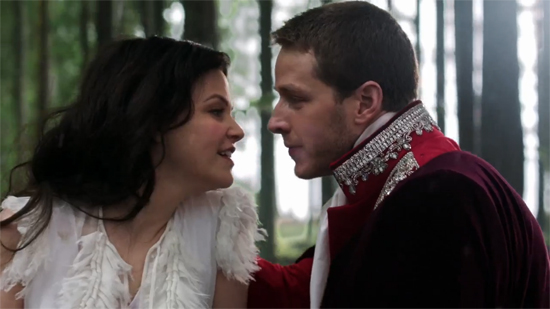 Image screen captured from abc.go.com.
Image screen captured from abc.go.com.
Fantasy is in vogue these days; even sometimes finding its way to the fashion runway. Admittedly, its big-screen run is nearing the end. The decade-long Harry Potter series came to an end in 2011, while the latest Hobbit movie marks the end of Peter Jackson’s The Lord of the Rings decade (extended cut, 2001-2014). Yet while big-budget blockbusters has been taken over by superhero movies or science-fiction dystopias, 2011 saw the advent of two small-screen franchises: the HBO epic fantasy series Game of Thrones and the network hit that is currently Netflix’s second most popular show, the fairy-tale drama Once Upon a Time. Game of Thrones, of course, has been the subject of many academic discussions and controversies; here, it has already been covered excellently on this site from the perspective of visual narrative theory, internet-enabled reader-response “marginalia," and even the tradition of opening films and television episodes with horses, and has had an excellent write-up of the ways its fashion stages culturally situated arguments about gender. Expanding upon Deb's comment yesterday that costumes are always making an argument, I want to look at the way that Once Upon a Time uses costumes to navigate the tension between our sense of the vibrancy of our present day lives and our collective desires for the past, especially as filtered through the lens of childhood memories.
In terms of costumes, Once is more frequently in dialog with Disney than with traditional versions of the fairy tale. Characters such as Maleficent dramatically echo the costumes of their animated versions, and Disney characters such as Mulan, Cruella De Ville, and even Frozen’s Anna, appear despite lacking a traditional fairy-tale pedigree. The show’s treatment of Snow White, however, creates a more subtle visual argument. While the animated Snow White wore this dress:
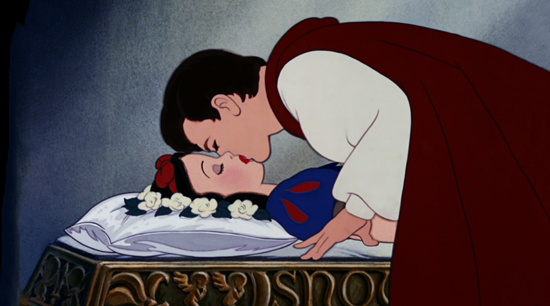 The first feature-length Disney Princess; nearly as iconic as Mickey Mouse. Image credit: Disney.com.
The first feature-length Disney Princess; nearly as iconic as Mickey Mouse. Image credit: Disney.com.
Once recreates the scene, with what initially appears to be the Worst Fairy-Tale Dress Ever:
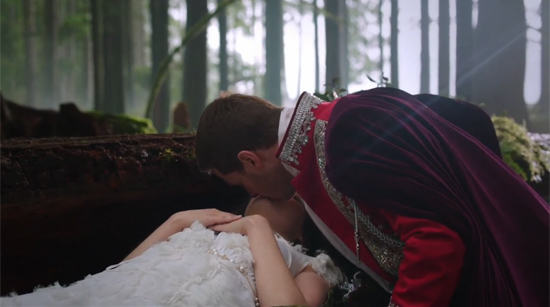 Image screen captured from abc.go.com.
Image screen captured from abc.go.com.
While the prince of Once wears an even more decorative version of his cartoon forebearer’s crimson duds, Snow White’s costume is literally bleached of color. Her wedding gown, presumably the same dress, compares very poorly to the dramatic blue, red, and white of her original costume:
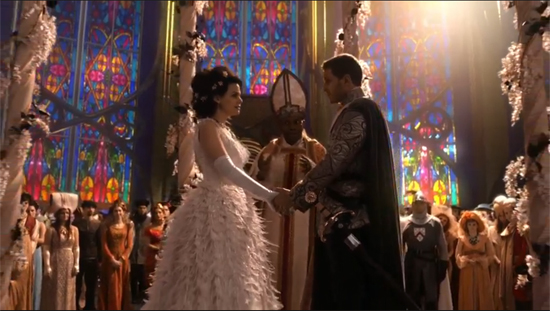 Even the priest knows her dress is a terrible idea. Image screen captured from abc.go.com.
Even the priest knows her dress is a terrible idea. Image screen captured from abc.go.com.
The blues remembered from childhood, however, return in the costume of Mary Margaret Blanchard, a version of Snow White who has been denied her happily-ever-after and trapped in the dismal world of America’s suburbs.
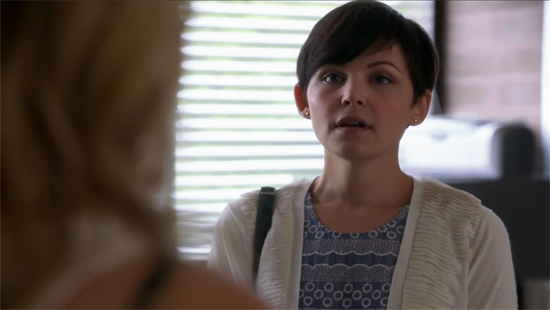 Screen captured from abc.go.com.
Screen captured from abc.go.com.
Here, as in her wardrobe throughout season 1, the modern Snow White avoids the animated queen’s vibrant reds (among the heroes, red is reserved for Emma, the modern investigator who serves as the show’s protagonists), but carries the trademark white-and-blue color scheme from the Disney original. In fact, the epic wardrobe battle between the blues that echo her Disney forebear and the whites that parallel her televised queenship in her wardrobe determines much of the plot of her Season 1 costumes. White clothing generally signals her passivity, her submission to society's expectations, and her unwillingness to pursue her own identity. In the last episode, at the character's nadir, she wears a thick white coat that almost, but not quite entirely, covers up her blue blouse. In the language of the film, it signals the nearly complete loss of her fairy-tale identity--the death, essentially, of her personality.
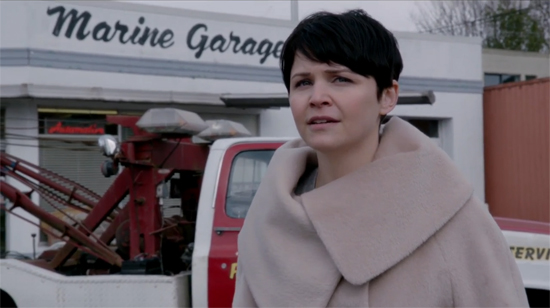 Screen captured from abc.go.com.
Screen captured from abc.go.com.
Of course, thanks to the show's fairy-tale promise, we know that her blue blouse, barely glimpsed in this image, and the blue jeans she wears beneath her coat, will win out. In the first season's climax, all is set to rights and she finds her lost love (along with the fairy-tale promise of a happily-ever-after.) Yet the way her fashion decisions play upon her earlier, fairy-tale self is complex. On one hand, her fairy-tale past is a colorless place, as devoid of vibrancy as it is alien to the reader’s experiences. On the other, nostalgia for the past--specifically, the past as her audience remembers it from their childhood Disney films--lives on in hidden patches of blue. The show about fairy-tale characters in a modern-day setting thus manages to have its cake and eat it, too: we can revel in our modernity even as we yearn for childhood visions of our medieval past.



Add new comment